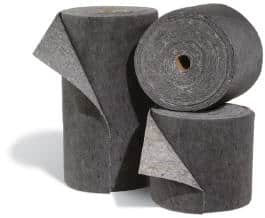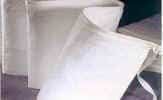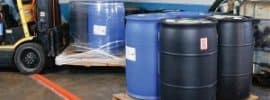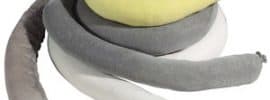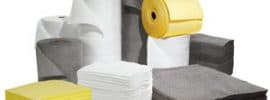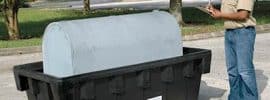In any industrial or commercial setting, controlling spills is more than just good housekeeping, it’s about safety, compliance, and cost-efficiency. One of the most versatile and widely used tools for managing leaks and spills is the sorbent roll. But here’s the thing: not everyone is using sorbent rolls as efficiently as they could be.
If you’re tearing off random chunks of absorbent material or using oversized sections for small leaks, you’re likely wasting product and money. Learning how to properly cut and size sorbent rolls can drastically improve your spill response strategy while reducing unnecessary material use. In this guide, we’ll walk you through exactly how to do it.
And remember, when you’re ready to stock up on sorbent rolls or spill containment supplies, AbsorbentsOnline.com has everything you need.
Understanding Sorbent Rolls: What They Are and Why They Matter
Sorbent rolls are large sheets or rolls of highly absorbent material that are designed to soak up industrial fluids such as oils, coolants, solvents, water, or chemicals. They are often used in factories, automotive shops, labs, warehouses, and other facilities where spills and leaks can occur.
Key Benefits of Sorbent Rolls:
- Versatile use: Can be used on floors, under machinery, on workbenches, or wrapped around leaking equipment.
- High absorbency: Made to capture liquids quickly and efficiently.
- Customizable size: Can be cut to fit unique spaces or applications.
- Space-saving: Rolls take up less room than storing stacks of pre-cut pads.
Sorbent rolls come in various materials, including:
- Oil-Only Sorbents: For oils and petroleum-based liquids, repel water.
- Universal Sorbents: For water, oils, and general maintenance applications.
- Hazmat Sorbents: For aggressive or unknown chemicals.
Selecting the right type is the first step in maximizing the effectiveness of your spill control efforts.
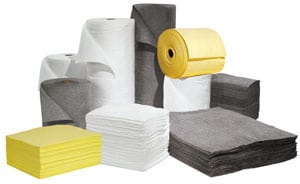
Why Proper Sizing and Cutting Is Critical
Cutting and sizing your sorbent rolls correctly ensures that you’re using just the right amount of material, not too much, not too little. It’s a simple step that can lead to:
- Reduced product waste
- Lower operational costs
- Quicker and more targeted spill response
- Safer working environments
- Better compliance with safety regulations
Whether you’re managing small daily leaks or preparing for potential emergencies, knowing how to efficiently use every inch of your sorbent material is a game-changer.
When to Use Full Rolls vs. Custom Cuts
There are situations when deploying a full-width roll is necessary, like in the case of a wide-area spill. But most of the time, smaller sections are far more practical.
Common Applications for Custom-Cut Sorbents:
- Under constantly dripping pipes or valves
- Lining toolboxes, shelves, or benchtops
- Fitting inside spill pallets or trays
- Wrapping around hoses or fittings
- Spot-cleaning small fluid leaks or drips
The more tailored the cut, the more efficient your cleanup becomes—and the longer your roll lasts.
How to Cut Sorbent Rolls the Right Way
The good news is, cutting and sizing your absorbent rolls is easy with the right tools and a little planning.
Step 1: Choose the Right Roll for the Job
Before you reach for the scissors, make sure you’ve selected the correct sorbent type based on your spill risk:
- Oil-Only Rolls: Perfect for automotive shops, marine use, or outdoor applications where oil spills are common.
- Universal Rolls: Ideal for maintenance shops, manufacturing plants, or any location with mixed fluid spills.
- Hazmat Rolls: Designed for laboratories and chemical processing facilities that handle aggressive or unknown fluids.
Consider the roll’s width and length, most are available in 15″ or 30″ widths, with lengths ranging up to 150 feet.
Step 2: Take Advantage of Perforated Options
Many high-quality sorbent rolls come pre-perforated at intervals (commonly every 18″ or 36″). These perforations make it easy to tear off clean sections without scissors or cutting tools. Use the perforations wherever possible for speed and accuracy.
If you find yourself regularly using the same sizes, choosing perforated rolls with dimensions that match your needs can significantly reduce prep time.
Step 3: Measure and Cut for Custom Applications
For situations where pre-perforations won’t cut it, here’s how to make your own precision cuts:
Tools You’ll Need:
- Heavy-duty utility knife or industrial scissors
- Measuring tape or ruler
- Marker for measuring lines
- Durable cutting surface or mat
- Straight edge (metal ruler or level)
Cutting Technique:
- Measure the area that needs coverage or wrap.
- Mark your cutting lines on the roll using a marker and straight edge.
- Lay the roll flat on your cutting surface.
- Use the utility knife or scissors to make a clean cut.
- Store any unused sections in a dry, accessible location.
If you need to cut multiple sheets of the same size, stack them and cut together to save time.
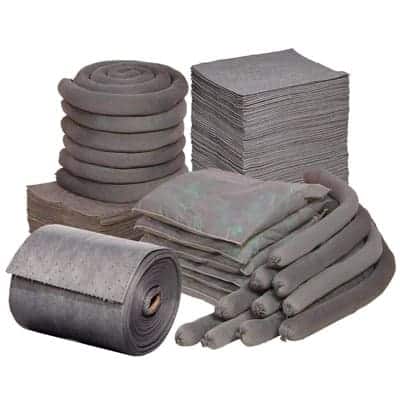
Storage and Organization Tips
Proper storage is just as important as proper cutting. Once you’ve pre-cut your sorbents, keep them well-organized so they’re easy to grab when spills occur.
- Use labeled bins for different sizes and types
- Wall-mounted dispensers work well for high-traffic areas
- Keep sorbents dry to maintain absorbency
- Avoid over-exposure to UV light or heat to prevent degradation
Consider setting up a dedicated spill response station with pre-cut sorbents, gloves, disposal bags, and other PPE for fast access.
Common Mistakes to Avoid
Even with the best intentions, improper use of sorbent rolls can lead to waste and inefficiency. Here are some mistakes to steer clear of:
- Using the wrong sorbent type for the fluid (e.g., oil-only rolls for water-based spills)
- Cutting random sizes without a plan, which leads to inconsistencies and waste
- Ignoring available perforations, which are faster and cleaner than free-hand cuts
- Over-saturating large pieces, instead of using multiple smaller ones for better coverage
- Storing in damp or contaminated environments, which degrades absorbency
Avoiding these pitfalls will help extend the life of your absorbent materials and improve overall response effectiveness.
Train Your Team for Efficiency
Spill control is a team effort. Make sure your employees are trained on:
- How to identify the correct sorbent type
- When and how to cut rolls for various applications
- Where to find pre-cut materials and tools
- How to properly dispose of used sorbents
Post simple instructions in spill-prone areas or include training as part of regular safety meetings. A little knowledge goes a long way in reducing response time and preventing injuries or environmental violations.
Why Quality Sorbents Make a Difference
Even with perfect cutting techniques, low-quality sorbents won’t perform well. Cheap materials may tear, absorb slowly, or allow spills to spread. Always invest in high-performance absorbents that offer:
- Strong, durable construction
- High absorbency rates
- Clear labeling and usage guidelines
- Optional perforation for ease-of-use
At AbsorbentsOnline.com, we only carry sorbent rolls that meet our standards for industrial reliability and value.
Boost Your Spill Control Efficiency Today
Smart spill response isn’t just about reacting to leaks, it’s about preparing your workspace to handle them quickly and efficiently. Cutting and sizing your sorbent rolls is a simple habit that can lead to:
- Reduced cleanup time
- Fewer wasted materials
- Lower operational costs
- Safer, cleaner work environments
Whether you’re outfitting a single workstation or managing a facility-wide safety plan, customized sorbents are a low-effort, high-impact upgrade.
Ready to Take Control of Spills Like a Pro?
Explore our full selection of high-quality sorbent rolls, spill kits, and containment solutions at AbsorbentsOnline.com. With a wide variety of materials, sizes, and styles, we make it easy to find exactly what you need to keep your workplace safe, clean, and compliant.Shop Now at AbsorbentsOnline.com – Your Trusted Source for Spill Containment Solutions.
